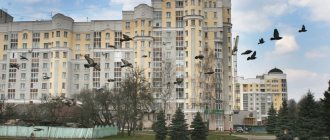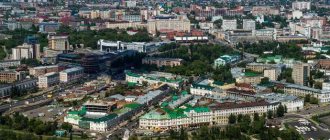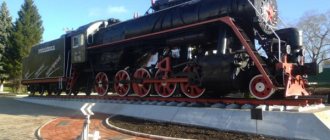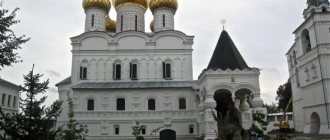Pskov region: cities and districts of the Pskov region, recreation, excursions, nature reserves, parks, museums, churches, attractions.
- New Year tours
to Russia - Last minute tours
to Russia
The Pskov region is the birthplace of many outstanding people who have contributed to the glory of Russian and world culture. There are three large museum-reserves in the region: the Pskov Regional United Historical-Artistic and Architectural Museum-Reserve "Pogankin Chambers", the Historical-Architectural and Natural-Landscape Museum-Reserve "Izborsk" and the State Memorial Historical-Literary and Natural-Landscape Museum-Reserve. Pushkin's Mikhailovskoye Nature Reserve with numerous branches, including the Rimsky-Korsakov estate museums in Lyubensk and Vechash, Mussorgsky in Naumovo, Kovalevskaya in Polibino, as well as a network of municipal museums.
History of the Pskov region
The first written mentions of the Pskov region (modern Pskov) date back to 903, and according to archaeological data, the current territory of the Pskov region was inhabited more than 2 thousand years ago - first by the Baltic and Finno-Ugric tribes, and then by the first Slavs, who appeared here around the 6th century. . n. e.
From the 10th to the beginning of the 12th centuries. The Pskov region was part of the Old Russian state, and later - part of the Novgorod land. Officially, the separation of Pskov from Novgorod occurred only in 1348 under the terms of the Bolotov Treaty - then Pskov became the capital of the Pskov Veche Republic.
In 1510, the Pskov Republic was liquidated and included in the Grand Duchy of Moscow.
In the 17th century with the beginning of the period of unrest and after it, the Pskov region was occupied by Sweden and Poland - thus, under the terms of the Deulin truce of 1618, the Pskov cities of Sebezh and Nevel were transferred to the Polish-Lithuanian Commonwealth and were returned to Russia only in 1772.
In 1944, the Pskov region was formed, the modern borders of which were formed only in 1958.
Nevel is another regional city
For 2021, according to the population census, more than 15 thousand inhabitants are recorded. Nevel has been characterized by constant outflow for more than 20 years.
The city is characterized by a transport problem caused by the cancellation of all commuter trains. The once large Nevel-1 station, located on the outskirts, is now practically non-functional. Diesel locomotives have not been repaired for a long time; only cargo can be transported. Because of this, many residents find it difficult to get to neighboring communities. The situation is saved by buses departing from the bus station. Bus service is also irregular.
Weather in Pskov region
The climate of the Pskov region is warmer and milder than other regions of the north-west of the country. The average July temperature is +16…+18 °C, and +30 °C is not uncommon. But with all this, drizzling rain is a common phenomenon even in summer. At the end of August, early autumn comes to the Pskov region with cold weather and prolonged rains, briefly interrupted in September-October by the warm and dry “Indian summer”. In winter, there are frequent snowfalls and not very cold: -6...-8 °C, thaws occur periodically. Spring usually arrives in early March.
From May to July, the sun drops below the horizon at night so briefly that sunset gradually turns into dawn. Almost like “white nights” in St. Petersburg.
Holidays in the Pskov region
The picturesque nature of the Pskov region, coupled with the grandeur of the architecture of the oldest Russian cities, creates ideal conditions for an unforgettable vacation.
The Pskov region is called the land of forests and lakes, attracting to the local lands not only those who want to relax in the lap of beautiful nature, but also those who like fishing and hunting. Tourists are offered numerous holiday homes, sanatoriums and camp sites located on the shores of lakes and open all year round.
National parks and reserves offer guests the most interesting excursions, multi-day tours and expeditions, during which they provide a unique opportunity to get acquainted with the nature of the Pskov region.
The most ancient cities of the Pskov region, including Pskov, Izborsk, Pechory and monasteries led by the largest in Russia Holy Dormition Pskov-Pechersky Monastery, welcome connoisseurs of history and antiquity.
Ostrov is a typical regional city
The quiet town practically does not stand out among other regional settlements. The local population rarely encounters traffic jams, but is well aware of the worn-out infrastructure. Many people focus their energy on sports. This is facilitated by the promotion of a healthy lifestyle on the part of biathlon). The number of schools and kindergartens is small, and the situation with hospitals is quite difficult. Young people either leave for larger cities or go to serve in a training center where they train future helicopter pilots. It is difficult to talk about employment opportunities in relation to the Island, since there are no important and promising enterprises here.
Hunting in the Pskov region
The Pskov region is a paradise not only for fishermen, but also for hunters. The local forests are rich in game and animals, and you can hunt all year round. Currently, 55 legal entities are registered in the Pskov region, which are assigned vast hunting grounds with a total area of more than 2 thousand hectares. The grounds are home to 14 species of game animals and 5 species of birds, including wild boar, elk, roe deer, lynx, martens, wild boar, beavers, bears, badgers, black grouse and wood grouse. Limits for shooting game animals are annually established by the State Committee of the Pskov Region for Nature Management and Environmental Protection in agreement with the Ministry of Natural Resources and Ecology of the Russian Federation.
At numerous recreation centers, guests are provided with the services of professional huntsmen with the opportunity to take part in hunting - “for roar”, “for wad” or “for groan”.
Lakes of the Pskov region
In the Pskov region there are more than 3 thousand lakes, constituting 6% of its total area, and the entire lake-river system of the region belongs to the Baltic Sea basin. Among the largest, the Pskov-Chudskoye Lake stands out - the third largest in Europe, second in size only to Ladoga, Onega and Swedish lakes Vänern. Pskov-Chudskoye Lake consists of three parts - Chudskoye, Pskovskoye and Teploe lakes. About 30 rivers flow into the lake, and one flows out, the Narva River. There are 29 islands on the lake.
The second largest after Pskov-Chudskoye is Lake Zhizhitskoye, the third is Dvinye-Velinskoye, which also consists of several parts - Lake Dvinye and Lake Velinskoye.
Lake Polisto, which ranks 4th among other reservoirs in the region, is located in a hard-to-reach wetland and is surrounded by the largest Polisto-Lovatsky swamp massif in the region. This is the only body of water in the Pskov region where saberfish (freshwater herring) lives and one of the few in the region where blue bream lives.
Lake Sebezhskoe is located at an altitude of 126 m above sea level and is part of the national park of the same name, but one of the deepest lakes in the region is Lake Alyo.
Fishing in the Pskov region
The Pskov region is called the land of a thousand lakes, and rightly so, because on its territory there are 3,432 small lakes with a total area of about 113 thousand hectares! All lakes are classified according to the ichthyological principle and are characterized as follows: bream-pike-perch, bream-bleak, roach-perch, pike, line, perch and crucian carp lakes.
10 species of fish are considered the most valuable for fishing: smelt, vendace, pike perch, bream, pike, Chud whitefish, perch, roach, burbot, ruffe, and most of the valuable commercial fish are caught in Lake Peipsi. Not only the lakes are rich in various types of fish, but also the rivers of the Pskov region - Talitsa, Visech, Kunya, where catfish, pike and roach are found.
For those who come to relax and fish, all conditions for fishing have been created in the Pskov region - on the shores of lakes there are numerous recreation centers, guest houses, country clubs open all year round, because winter fishing in the Pskov region is no less popular.
Guides in the Pskov region
All guides in the Pskov region
Excursions by Dmitry Artamonov
- Sightseeing tour of Pskov
- The last fortress of the empire
- Pskov Fortress through the centuries
All 4 excursions
Excursions of Alena Viktorovna Ulyanova
- "Stalin Line"
- Pskov Kremlin
- St. John the Theologian Savvo-Krypetsk Monastery
All 9 excursions
Excursions of Andrey Grigorievich Taskaev
- To the city of Ostrov - “The Kingdom of Flax and the Mantle of Pskov.”
- To the Talab Islands “There are three wonderful islands in Lake Pskov...”
- To Izborsk “On a visit to the Pskov Finno-Ugrians”
All 4 excursions
Excursions of Anna Dmitrievna Bogdanova
- The charm of ancient Pskov
- On a visit to A.S. Pushkin. Mikhailovskoye, Trigorskoye, Svyatogorsky Monastery
- Trip to the Pskov-Pechersky Monastery and Izborsk
All 6 excursions
Excursions
- Zapskovsky tales
- Monasteries UNESCO
- Pushkin Mountains (Mikhailovskoye, Svyatogorsky Monastery), bus excursion from Pskov
All 26 excursions
All guides in the Pskov region
Content
- 1 Large cities 100-250 thousand people 1.1 Pskov 1.1.1 Major Russian projects implemented in Pskov
- 2.1 Velikie Luki
- 3.1 Nevel
Entertainment and attractions of the Pskov region
There are more than 3,700 lakes in the Pskov region, including the third largest in Europe - Lake Peipus-Pskov. Another attraction of the region is the delicious fish smelt, which is caught only in the Pskov region.
Travelers are attracted by ancient fortresses in Izborsk, Porkhov, and Gdov. Not only pilgrims come to the Pskov-Pechora Monastery, Nikandrova Monastery, and the Krypetsky Monastery. Ethnic tourism is also represented in the region: Izborsk land is the homeland of the small Seto people, who live today in southern Estonia and in the Pechora region.
An ethnographic museum of Seto has been opened in the village of Sigovo, Pechora district. Each of the cities and museums has its own attractiveness, its own cultural resource, designed to participate in the tourism industry.
Small towns up to 20 thousand people
Nevel
Population 15,250 people (2016).
Opochka
Population 10,483 people (2016).
Pechory
Population 10,142 people (2016).
Porkhov
Population 9,172 people (2016).
Bottom (city)
There are other meanings of this name
Population 7,982 people (2016).
Novosokolniki
Population 7,468 people (2016).
Sebezh
Population 5,449 people (2016).
Pytalovo
Population 5,406 people (2016).
Empty
Population 4,186 people (2016).
Gdov
Population 3,600 people (2016).
Novorzhev
Population 3,368 people (2016).
Monasteries of the Pskov region
One of the largest in Russia is the Holy Dormition Pskov-Pechersky Monastery, the foundation of which dates back to the turn of the 14th-15th centuries, when the first monk, St. Mark, settled in a deep ravine near the small stream Kamenets. In 1470, Hieromonk Ion settled on the cave mountain, and dug in the mountain the first church of the Assumption of the Blessed Virgin Mary, consecrated in 1473 - this date is considered the date of foundation of the monastery. Subsequently, a monastery was formed around the temple.
But the oldest monastery in Pskov is the convent of the Nativity of the Blessed Virgin Mary of Snetogorsk, which, according to legend, was founded in the 13th century.
Before 1156, Bishop Nifont of Novgorod founded the Spaso-Preobrazhensky Mirozhsky Monastery, on the territory of which today the oldest architectural monument in Pskov is located - the Spaso-Preobrazhensky Cathedral. In 1569, by order of Tsar Ivan IV, the Holy Dormition Svyatogorsk Monastery was founded, which from ancient times was one of the most revered in Rus', because the reason for its foundation was the signs from the icons of the Mother of God “Tenderness” and “Hodehydria”, which appeared to the holy fool Timothy.
Large cities 100-250 thousand people
Coat of arms of Pskov
Pskov
Population 208,145 people (2016). The only big city in the region and the regional center. One of the oldest Russian cities, mentioned since 903, originally as Pleskov. From the middle of the 13th to the beginning of the 18th century, it was one of the most important and largest fortresses of the Russian state, sometimes semi-independent.
The city has practically become one of the symbols of Russia thanks, first of all, to the heroism of its defenders, as well as the power of its walls. It has the status of a city of military glory.
Major Russian projects implemented in Pskov
- 947
- Construction of the city of Pleskov (Pskov) and the wooden Trinity Cathedral
- 1137-1138
- instead of a wooden one, the stone Trinity Cathedral was built. - 1193
- the stone Trinity Cathedral was built for the second time.
- 1308
- on the site of a swamp that had been drained, filled up and paved with wooden blocks, the Torgovishche was built. - 1309
- the stone Wall of Posadnik Boris was built - 1365-1367
- the stone Trinity Cathedral was built for the third time. - 1375
- The Fourth Stone Wall was built. - 1387
- Three stone towers were built near the Fourth Stone Wall. - 1400
- the western wall of the Pskov Krom (Kremlin) and the towers adjacent to it were rebuilt in stone.









